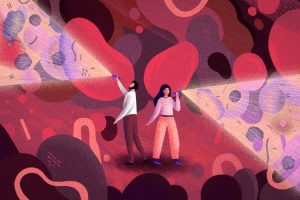Dynamic Causal Modelling
Neuroscientist Karl Friston on functional specialization of different brain areas, brain hierarchy, and the co...

Researchers recognize that medical antibiotic resistance is dangerous. The World Health Organization (WHO) acknowledged this issue in the first decade of the 21st century. In 2014, WHO released recommendations to combat antibiotic resistance, leaving the implementation of these measures to national healthcare systems. However, not all recommendations have been fully implemented.
Since the mid-2000s, scientists have been monitoring the spread of antibiotic-resistant bacterial pathogens. In 2009, a list of clinically significant pathogens posing the greatest danger was formulated, named with the acronym ESKAPE: Enterococci, Staphylococci, Pseudomonas, Klebsiella, Acinetobacter, and Enterobacter. In recent years, the number of dangerous microorganisms had increased.
Firstly, global pharmacology has sufficient antimicrobial drugs to combat specific antibiotic-resistant strains. Bacteria resistant to all types of antibiotics are still rare.
Secondly, the potential for discovering new antibiotics through synthetic chemistry has not been exhausted. Now, we can analyze microbial communities from unusual origins, revealing microorganisms previously unknown to us. These can provide new antibiotics and insights into their synthesis.
Thirdly, mechanisms for combating bacteria in higher organisms are being studied. Animals typically use peptides, protein-based compounds, to fight bacterial pathogens. Although they are complex to synthesize and naturally occur in small quantities, scientific advancements over the last half-century have created recombinant constructs. This means primitive organisms like bacteria or yeast can be engineered to synthesize compounds characteristic of animals or higher plants.
Fourthly, compound structures can be combined. For instance, in addition to an antibiotic, a drug can include a substance that suppresses the defence mechanism against that antibiotic. For example, beta-lactamase is an enzyme in bacteria that destroys the beta-lactam ring in penicillin. If we inhibit this enzyme, penicillin can perform its lethal action unimpeded.
Fifthly, there is the concept of prodrugs. These “molecular saboteurs” are inactive when entering the patient’s body but become active inside bacteria. A masking part is removed, allowing the second half to kill the bacteria. This promising approach enables targeted delivery and ensures the necessary concentration of the substance within specific bacteria. Additionally, antibiotics can be attached to nanoparticles.
Sixthly, microorganisms have their natural enemies—specific viruses or bacteriophages—which are harmless to other organisms. They could potentially solve the problem of antibiotic resistance, although implementing this solution requires time, money, and purpose.
Agriculture, livestock, and crop production release more antibiotics into the environment than human activities. Antibiotics are used not only to treat infections in plants and animals but also as biological additives. Since the 2010s, antibiotic use in agriculture has been restricted.
Doctors bear significant responsibility and do not wish to risk patients’ health. Surgical procedures often involve prophylactic antibiotic use.
Antibiotics are ineffective against viruses. However, viral diseases can weaken the body and often lead to bacterial complications such as bronchitis or pneumonia, necessitating antibiotic treatment.
Regarding developing new antimicrobial drugs, the current system for testing, approving, and certifying new drugs is balanced but lengthy and costly. In 90% of cases, the development of antimicrobial drugs fails because resistance starts to manifest even during clinical trials.
If an antibiotic proves successful, it is reserved for severe cases. Patent protection for such a drug lasts for a limited time, and it becomes a generic drug that can be produced with minimal production purity requirements.
Even successfully developed new antibiotics have limited distribution and patent protection duration. Pharmaceutical companies often do not recoup the enormous costs of developing such drugs, so they lack the incentive to focus on antimicrobial drugs.
Moreover, recent trends show that even startups, which are high-risk enterprises for developing solutions against these superbugs and new antibiotic-resistant pathogens, do not receive support. This indicates a severe problem with no clear solution.
This article is part of the “One Health” guide, partnered with the biopharmaceutical company MSD Animal Health.

Neuroscientist Karl Friston on functional specialization of different brain areas, brain hierarchy, and the co...

Neuroeconomist Sacha Bourgeois-Gironde on the symbolic aspect of money, brain processing of economic artifacts...

Chemist David Philips on the phenomenon of phototoxicity, characteristics of the dyestuff, and limitations of ...